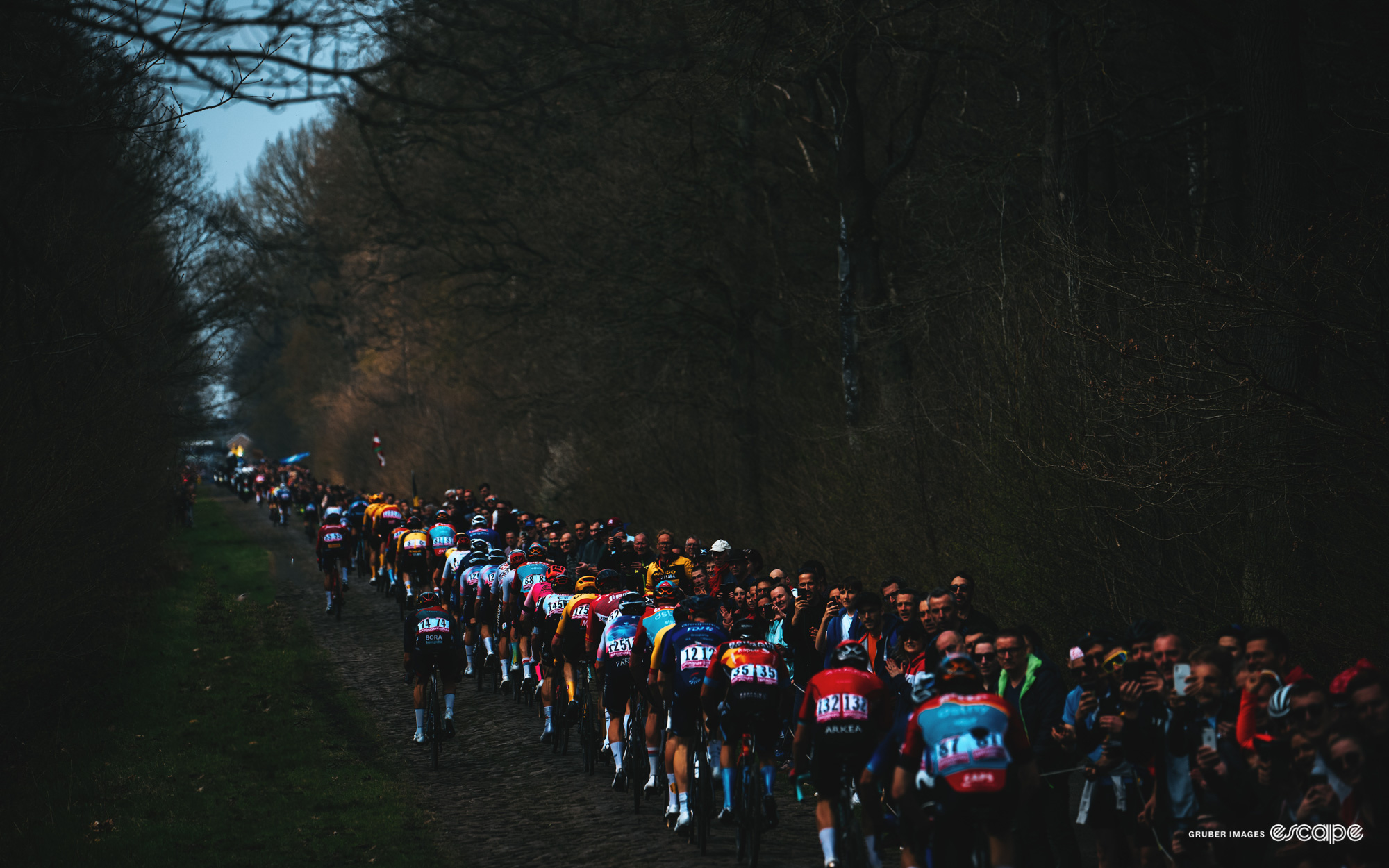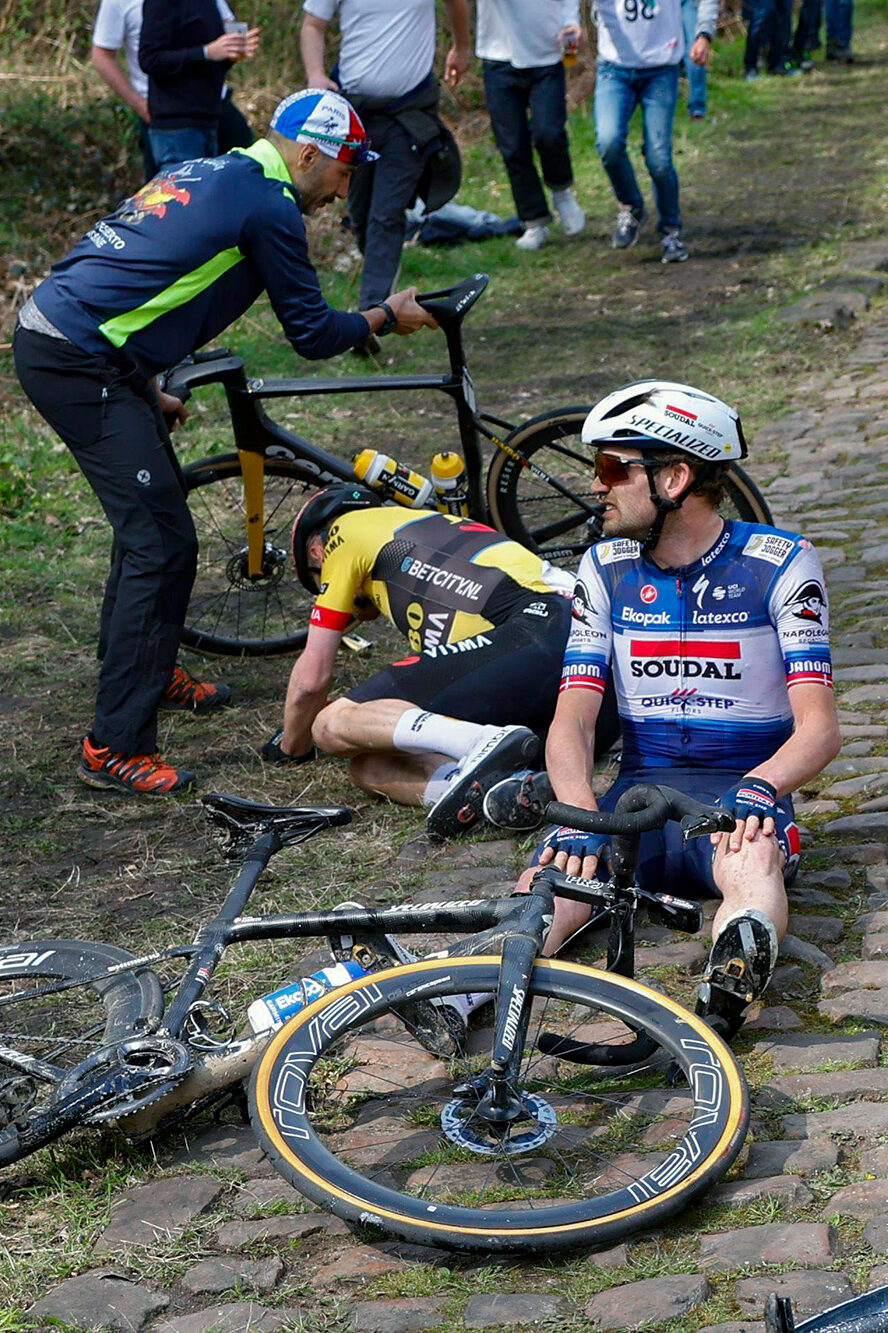Until the new Arenberg chicane is raced, any debate over the safety of the solution is nothing more than a guessing game, playing with probabilities we can’t truly understand and which depend not only on the structure of the course but on the skill and decisions of 200 men made under extreme duress.
It looks bad, right? Yet I’ve stood at the start of the Arenberg, watched riders smash into the first layer of stones, smack rims on rock with a crack like a gunshot, and eject from their perches at unfathomable speeds. I’ve cringed as they crunched to a stop and sat in agony as the race coursed around them, or over them. It is bad. It has always been bad. It’s beyond anything else in road cycling. There is a reason they asked for a change.
The new Arenberg chicane will end Roubaix for many, but not because they’re all about to crash into fences (though they might). These riders are skillful and aware and do the incredible on their bikes with unfathomable regularity. The physics of these corners, and their placement ahead of such a crucial sector, means staying upright will not be the only goal, or even the real problem for anybody trying to win. The number of riders this re-route will take out of the race, through crashes yes but also through a more natural attrition, will be far greater. The Arenberg has always been feared; for those who want to raise their arms in the velodrome, that fear only grows this year.
The whiplash
Poor positioning at the Arenberg has never been ideal, but with a straight run-in, it was possible to enter near the middle of the pack and, with a bit of luck and strong legs, exit in a similar position. Groups often reformed on the pavement that followed and there was no reason a rider who came out of the Arenberg in, say, 50th, would find it impossible to ever return to the front.
That will change with the chicane. The severity of the corners, in particular the 180, means that every rider outside the top 20 or so is going to slow to a crawl. It’s the whiplash effect. The latter half of the field will likely stop entirely. Riders will put a foot down. They will grab the fencing and swing around it, like a cyclocross race, and try to use every available meter of road to gain position. But only so many can be near the front. As Mathieu van der Poel is charging forward across the cobbles, the majority of the field will still be waiting in line, like traffic on a highway on-ramp.

Halfway through writing this little story, sitting in a coffee shop in Kortrijk, four Israel-Premier Tech riders walked in. Iain asked one about his dog, of course. Then we got to talking about the chicane. I’m not sure how to quote the noises and hand movements that defined their opinion of the change, but something like “phwaaaaa it’s a bit shit huh” sums it up. It will be harder, they believe. It will stretch the field more than ever before, and those groups may never come back together.
After the chicane, the peloton will enter the Forest moving at something closer to 30 kph than 60 kph. ASO has managed to make the Arenberg longer without having to lay any additional stones.
The Arenberg sector is 2.25 km long and the fastest riders, on race day, historically crossed it in just over three minutes. Filippo Ganna took 3:11 in 2017 and his time remains the fastest race time on Strava (there are faster times, but my guess is they were completed at least partially on the smooth path on the right side that is not available to racers). The average speed for that 3:11 effort was 42.5 kph. Ganna entered at 64 kph and exited at 39.5. The hardest part of the sector, shortly after the downhill half ends and the uphill part begins, saw a low speed of 36.2 kph.
With entrance speeds cut in half, total time on the sector will increase by around 30 seconds, to nearly four minutes. The gap between the first rider onto the sector and the last rider onto the sector is likely to be twice what it was before. If it took 30 seconds for the whole peloton to enter the Arenberg before, it’s now a minute. And the front group, at that point, is gone.
What did you think of this story?


